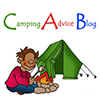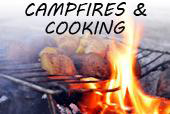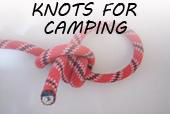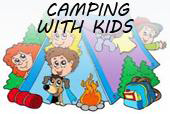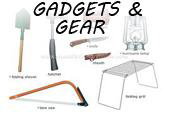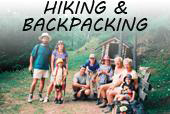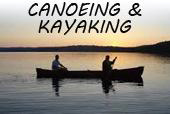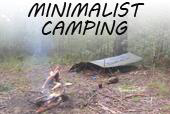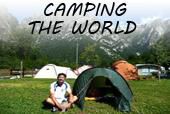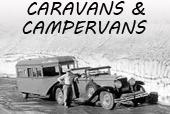Even more important than a tent for comfort is your sleeping bag. You can camp without a tent in a pinch, but without a good bedroll you will always have a hard time!
Sleeping bags are usually classed by the environment they are meant to be used in. Expect to spend good money for a sleeping bag, and take the time to shop around.
First, think about the places you usually camp, and the time of year you usually go camping. Imagine the worst-case scenario that will happen to you on a camping trip during the next few years- extreme snap cold, and no tent? Or the tent falls down but it’s a warm August night? Plan for your most severe camping need, and remember that you can always sleep in an open bag, or on top of it if it is hot weather.
If you usually go to low-altitude, warm places that are reasonably dry, and you usually camp out during the summer or early autumn months at marked camping sites, you have no need for an arctic-level sleeping bag. Unless you plan on becoming an active camper, and trying more difficult camping trips, just buy the most attractive bag that has a soft feeling, and good padding.
For those who are more involved in off-season camping, or those who camp out in the deep woods, bayou, or on rocky grounds, the ratings and materials become more important.
You will always want a bag which can be rolled small and compact, and which does not weigh too much. Some of the newer, lightweight materials offered are much more bulky when you roll them up than the old reliable down filling. Check these variables by actually rolling up the bag as if you were going to pack it, and then lift it. If the store has a scale (which many outdoor stores do) weigh the bag when it’s rolled. Take into account the size and weight when choosing a bag, before you start worrying about temperature ratings.
If you camp in cold weather, or in places that get damp, like swamps or near rivers, you’ll have to think about the temperature rating of your sleeping bag. These are tested by the manufacturer to give you a range at which the bag should keep you warm.
The testing does not account for dampness, wind, or body movements, so if you camp in damp places, windy mountaintops, or you are a restless sleeper, get a bag that is rated for lower temperatures than you think you will be camping in. All of these things will make the bag feel colder once you’re using it. Also, bags that are down-filled can get destroyed and weigh much more when they get wet, so if you’re a bayou or rainy-season camper, get a synthetic bag.
If you like being very warm at night or you are going to camp out in very cold places, look for a bag that has a hood that covers your head, and a bag that’s snug to your body. Loose bags or rectangular-shaped bags tend to lose more heat while in use. A “mummy” bag holds the heat right up against your body, making you feel warmer. If you are claustrophobic, you may choose to stick with a rectangle bag.
In short, look for a sleeping bag that will suit your needs. If you buy a good quality down sleeping bag, it can last many years. Think about the use you will get out of a good sleeping bag, rather than the cost, and you’ll find something that suits your needs well.
